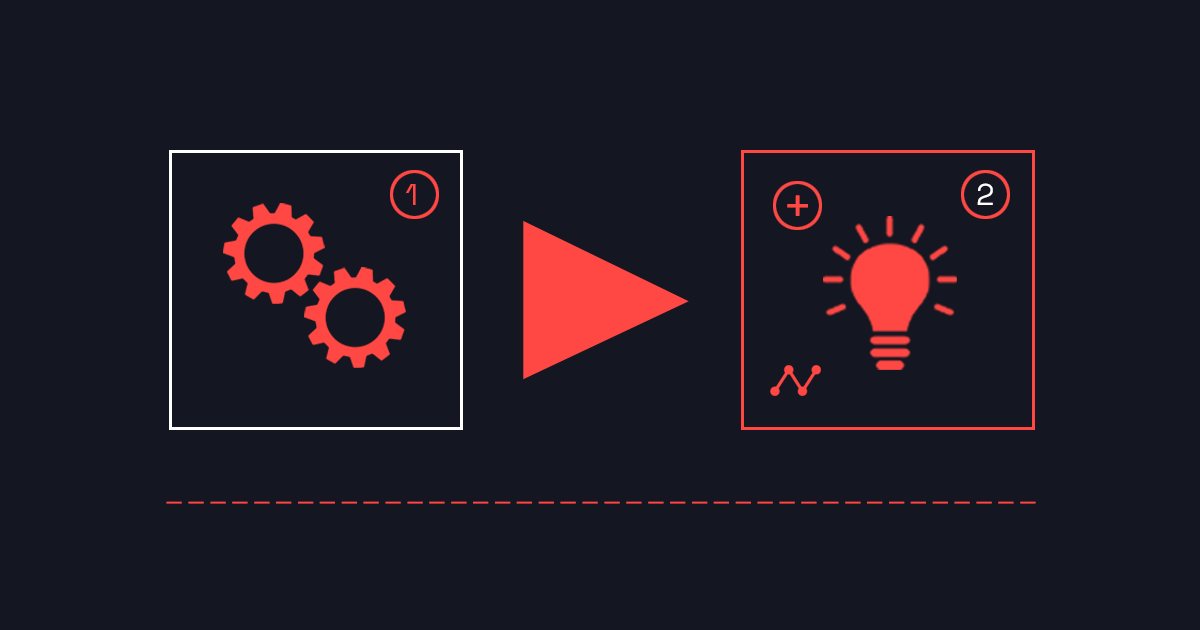Product delivery mindset #4: Second-order thinking
Read Time 3 mins | Written by: Kim Sullivan

Second-order thinking is about looking past the first step of any problem and anticipating what comes next.
Look ahead at various outcomes for near-term decisions to inform the present. Avoid reactively responding to pointless requests by thinking through effects — and effects of those effects — from the start.
To get an idea of how it works, just ask yourself over and over again — “And then what would happen?”
For example, your boss asks you for documentation you know they won’t read. Before investing several hours in it, ask yourself…
- What would happen if I wrote it? …I’ll wait for a response.
- Then what would happen? …I’ll ping them a few times.
- Then what would happen? …I’ll put an hour on the calendar to review it live.
- Then what? …It’ll shrink from an hour to half an hour just before go-time.
- Then what? …We’ll get on a zoom and the first 15m will be spent on my manager’s urgent items before getting to the subject at hand.
- Then what? …I’ll have 15 minutes to get their buy-in on the presented information.
Boom! So is a lengthy, google document really the right choice for this request?
No.
Instead throw some quick slides together summarizing the content since you only have 15 minutes to review and discuss.
Best case scenario: the document won’t be missed, you’ll save yourself plenty of time, and they’ll be grateful they don’t have a lengthy to-do sitting in their inbox, ticking for a review.
Worst case scenario: you align on the highest level aspects and you still have to write a doc.
But, you’ll know you aren’t wasting your time going down the wrong detailed path. And because your manager likely won’t read it anyhow, you can keep the document as light-weight as possible for other audience members.
By practicing second-order thinking, you’ll be one step ahead. Inefficiencies, time sinks, and wasted efforts will be avoided. And you’ll be prepared for any and all outcomes and corresponding contingency plans.
This mindset is critical to efficient product delivery – enabling MVEverything throughout – intentionally informing decisions and priorities before heading in the wrong direction.
The domino effect of second-order thinking
One request or decision leads to an effect. That effect leads to another effect. And so on. Take time to think through this domino effect so you can anticipate what effort now will be valuable, a good use of your time, and with the intended outcome(s) and impact(s).
If you don’t invest in this forward-thinking upfront, you’ll waste your time (and others.)
“Failing to consider second- and third-order consequences is the cause of a lot of painfully bad decisions, and it is especially deadly when the first inferior option confirms your own biases. Never seize on the first available option, no matter how good it seems, before you’ve asked questions and explored.”
–Ray Dalio
By always spending time on the right things, you’ll have more margin for other things, work or personal. And you’ll gain respect from others along the way by providing the right things with the right impacts.
Don’t stop at first-order thinking to be successful in your career, projects, and various roles. Second-order thinking is how you rise above the rest and deliver high performance impact.
Avoid being reactive and shortsighted
When faced with a decision, it’s a non-negotiable to think through anticipated and unanticipated consequences and inefficiencies that could result from a chosen course of action.
Don’t let the obvious choices and surface-level outcomes satisfy the thorough “what if/then” analysis required.
Pull from past experiences and missteps, talk to stakeholders, and if you aren’t inherently a realist or skeptic, find someone who is to help pull from the other end. This additional time spent upfront will not only save you time in the end, but it ensures the right work is delivered, with the right impacts, and some level of contingency planning.
Overall, the practice of second-order thinking helps you make decisions that align with long-term goals and objectives rather than reacting to immediate pressures or emotions.
Follow Kim on LinkedIn
Kim uses LinkedIn to share her thoughts on product delivery, prioritization techniques, and enterprise product development and design.
Follow and engage with her here.
Don't Miss
Another Update
new content is published

